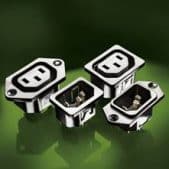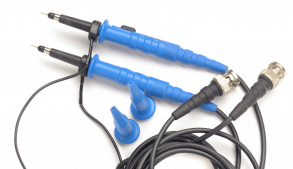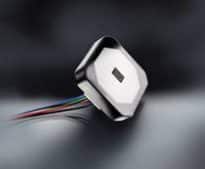Accurate data acquisition is often critical in various engineering and technical projects. However, a pervasive yet often-overlooked issue that arises in the system is signal noise. This unwanted electrical interference, originating from multiple sources, can corrupt measurements, hinder communication, and compromise equipment integrity. Recognizing the Symptoms: … [Read more...]
Military
Introduction to MIL-STD-461G
Where MIL-STD-464C serves as a system/platform level set of requirements, MIL-STD-461G serves as an equipment/subsystem level set of requirements. Similar to MIL-STD-464C, MIL-STD-461G was developed as an “Interface Standard” to allow usage without a waiver. The overall structure of the two documents is also the same in that both have a contractual main body and a very … [Read more...]
Spectrum Management and the EME
Certification In years past, E3 (Electromagnetic Environment Effects) control and Spectrum Supportability were considered separate entities and design and development efforts were often segregated. Over the last several years, the trend has shifted to a more consolidated approach and today the two areas go hand in hand. Spectrum Supportability starts with equipment spectrum … [Read more...]
Introduction to MIL-STD-464C
Responding to increasing criticism, Secretary of Defense William Perry issued a memorandum in 1994 that effectively eliminated the use of most defense standards. This has become known as the “Perry memo”. Many defense standards were canceled. In their place, the DOD encouraged the use of industry standards for quality assurance. MIL-STD-464 was developed as an “Interface … [Read more...]
SCHURTER Classic Power Entry Module with Circuit Breaker Gets Even Better
Santa Rosa, California, November 30th, 2023 – SCHURTER series DG11 and DG12 with and without main filters feature a first-of-its-kind ingress protection solution for IEC inlets, consisting of a seal gasket between the connector and mating V-Lock power cord. The blue colored latch of the V-Lock power cord and blue inlay of the appliance inlet indicate that the two have been … [Read more...]
Schurter Sets New Benchmark in Reducing CO2 Footprint with New Green Line
Santa Rosa, California, July 27th, 2023 – SCHURTER further embarks on its sustainability initiatives by introducing its new Green Line collection of high-quality components. As part of SCHURTER’s sustainable strategy, these IEC 60320-1 appliance connectors are the industry’s first to contribute to less CO2 emissions and lower material consumption. They are also first in the … [Read more...]
Fundamental Oscilloscope Probes
As electronics have become more advanced, so has the equipment used to measure their signal behavior and system performance. In the realm of EMC compliance, oscilloscopes are one of the important tools used to measure signals, hunt down noise sources, and identify time-domain measurements that may contribute to radiated or conducted emissions. Without a properly selected probe, … [Read more...]
The Voltage Rises
Santa Rosa, California, July 24th, 2023 – In the past, automobiles had minimal electrical systems and relied mainly on mechanical systems. Today, there are many electrical functions such as seat heating and cooling, comfort systems, and assistance systems that draw a lot of electricity from the battery. In a 12V vehicle electrical system, higher and higher currents must flow. … [Read more...]
Radiated Emissions Testing
INTRODUCTION Radiated emissions testing is only one part of emissions testing. CISPR 32, the document that lays out limits and methods of measurement for emissions (radiated and conducted) for Information Technology Equipment (ITE), broadcast receivers and multimedia equipment is 120 pages in length. ANSI C63.4 deals with only the testing part (limits are contained in a … [Read more...]
New Touchless Hidden Switch is Concealed Behind Surface
Santa Rosa, California, August 10th, 2023 – SCHURTER introduces the innovative THS switch series with optical sensor technology that can be concealed behind any surface without the need for mounting holes. A small opening in the user interface is all that is needed to allow the ToF sensor to actuate. Equipment and appliances used in public areas has created demand for … [Read more...]
- « Previous Page
- 1
- …
- 3
- 4
- 5
- 6
- 7
- …
- 85
- Next Page »














